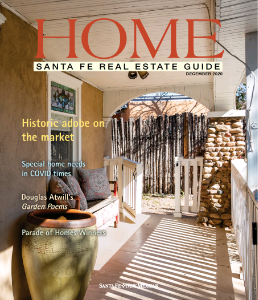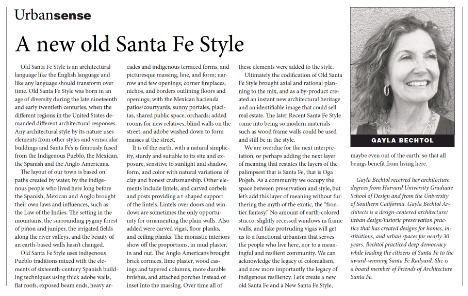No. 4 | Urban Sense: A New Old Santa Fe Style
In the December edition of The Santa Fe New Mexican’s Home Magazine, I talk about the New Old Santa Fe Style, its history, and its future in my column Urban Sense.


Read The Article:
Old Santa Fe Style is an architectural language like the English language and like any language should transform over time. Old Santa Fe Style was born in an age of diversity during the late nineteenth and early twentieth centuries, when the different regions in the United States demanded different architectural responses. Any architectural style by its nature uses elements from other styles and vernacular buildings and Santa Fe’s is famously fused from the Indigenous Pueblo, the Mexican, the Spanish and the Anglo Americans.
The layout of our town is based on paths created by water, by the indigenous people who lived here long before the Spanish, Mexican and Anglo brought their own laws and influences, such as the Law of the Indies. The setting in the mountains, the surrounding pygmy forest of piñon and juniper, the irrigated fields along the river valleys, and the beauty of an earth-based walls hasn’t changed.
Old Santa Fe Style uses indigenous Pueblo traditions mixed with the elements of sixteenth-century Spanish building techniques using thick adobe walls, flat roofs, exposed beam ends, heavy arcades and indigenous terraced forms, and picturesque massing, line, and form; narrow and few openings; corner fireplaces, nichos, and borders outlining floors and openings; with the Mexican hacienda patios/courtyards, sunny portales, placitas, shared public space, orchards; added rooms for new relatives, blind walls on the street, and adobe washed down to form masses at the street.
It is of the earth, with a natural simplicity, sturdy and suitable to its site and exposure, sensitive to sunlight and shadow, form, and color with natural variations of clay and honest craftsmanship. Other elements include lintels, and carved corbels and posts providing a t-shaped support of the lintels. Lintels over doors and windows are sometimes the only opportunity for ornamenting the plain walls. Also added were carved vigas, floor planks, and ceiling planks. The monastic interiors show off the proportions, in mud plaster, in and out. The Anglo Americans brought brick cornices, lime plaster, wood casings and tapered columns, more durable finishes, and attached porches instead of inset into the massing. Over time all of these elements were added to the style.
Ultimately the codification of Old Santa Fe Style brought axial and rational planning to the mix, and as a by-product created an instant new architectural heritage and an identifiable image that could sell real estate. The later Recent Santa Fe Style came into being so modern materials such as wood frame walls could be used and still be in the style.
We are overdue for the next interpretation, or perhaps adding the next layer of meaning that restates the layers of the palimpsest that is Santa Fe, that is Oga Po’geh. As a community we occupy the space between preservation and style, but let’s add this layer of meaning without furthering the myth of the exotic, the “frontier fantasy.” No amount of earth-colored stucco, slightly recessed windows in frame walls, and fake protruding vigas will get us to a functional urbanism that serves the people who live here, nor to a meaningful and resilient community. We can acknowledge the legacy of colonialism, and now more importantly the legacy of indigenous resiliency. Let’s create a new old Santa Fe and a New Santa Fe Style, maybe even out of the earth, so that all beings benefit from living here.
Gayla Bechtol received her architecture degrees from Harvard University Graduate School of Design and from the University of Southern California. Gayla Bechtol Architects is a design-centered architecture/urban design/historic preservation practice that has created designs for homes, institutions, and urban spaces for nearly 30 years. Bechtol practiced deep democracy while leading the citizens of Santa Fe to the award-winning Santa Fe Railyard. She is a board member of Friends of Architecture Santa Fe.
Related Articles
No. 28 | Urban Sense: Dreaming of a Future Optimism
In the July edition of The Santa Fe New Mexican's Home Magazine,...




